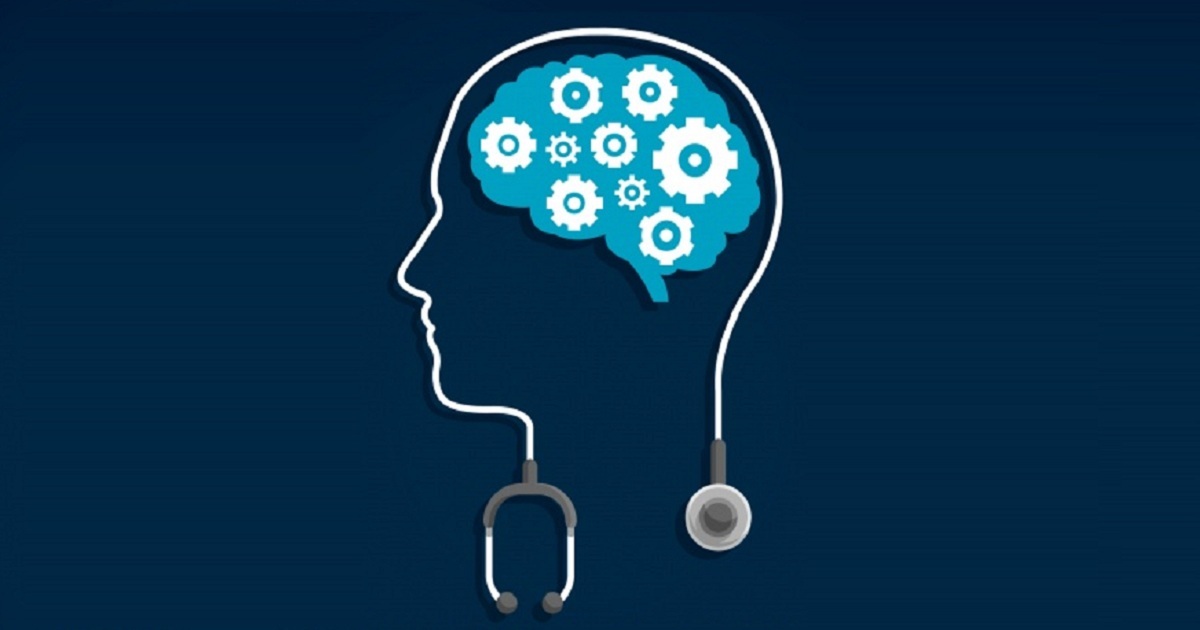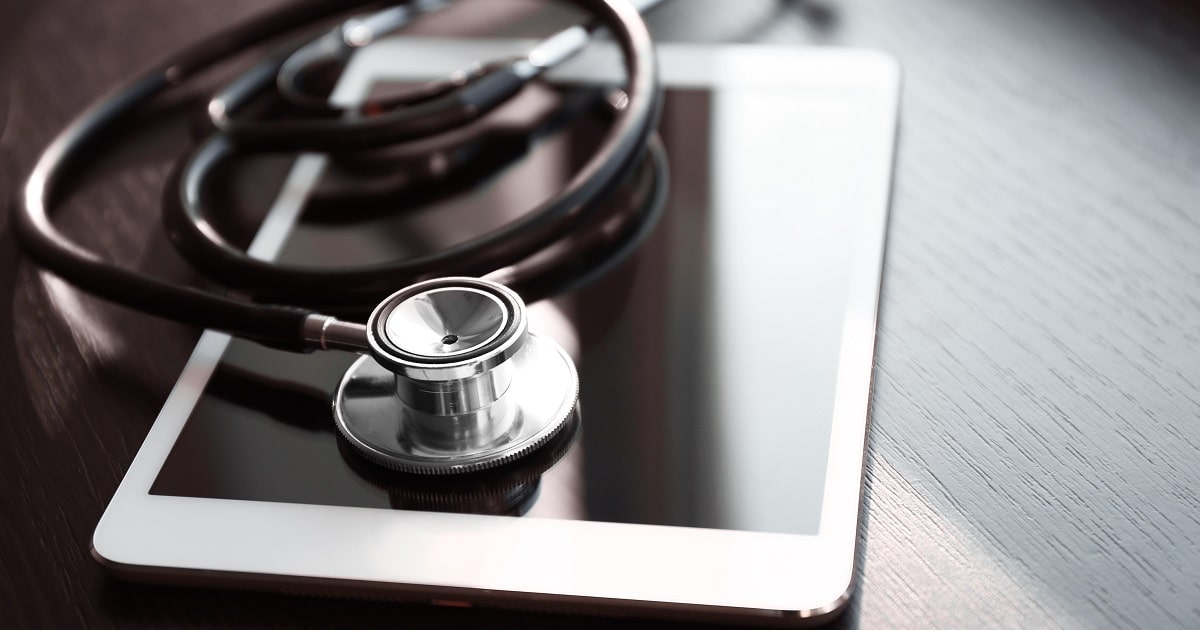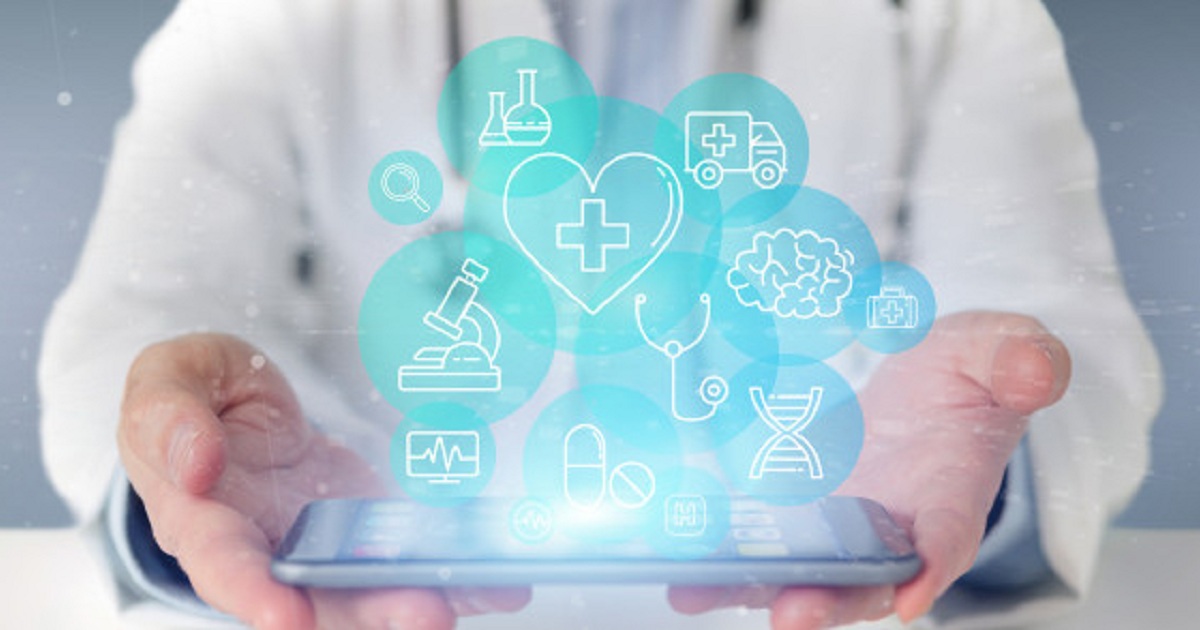
Health Technology, Digital Healthcare
Article | August 21, 2023
Do you know a friend or loved one who suffers from fear, anxiety, and depression and do not know what to do?
It can be difficult to watch someone you know struggle with their mental health and not be able to do anything about it.
As a result, here are 8 important tips on how to help the person you care about in these kinds of situations.
1. Learn as much as you can in managing anxiety and depression: There are many books and information that will educate you on how to deal with fear and anxiety. Share this information with the person who is struggling with their mental health.
2. Be understanding and patient with the person struggling: Dealing with depression and anxiety can be difficult for the person so do not add more problems than what is already there. Do not get into arguments with the person who is having a difficult time with their mental health.
3. Talk to the person instead of talking at them: It is important not to lecture the person who is struggling with anxiety and depression. Talk to the person about their issues without getting upset. Most people will listen if you approach them in the right manner.
4. Remind the person the importance of getting help: One way to convince the person who is struggling with fear and depression is to tell them what may happen if they don't get some assistance. Anxiety and depression can be difficult to manage and usually these mental health issues won't go away by themselves.
5. Find out why the person won't seek assistance: Address the issues on why the person will not get the necessary help. Many people who are struggling are fearful and frustrated. Try to find out the reasons why he or she won't get the help they need and then try to find ways that will overcome their resistance of seeking treatment.
6. Join a local support group: There are many mental health support groups in your area that can help you. Many hospitals, churches, and counselors in your area will be able to provide you with a list of groups. These mental health organizations will be supportive of your situation and they can give you additional advice on how to help the person who is struggling.
7. Talk to someone who has been there: Find somebody who used to struggle with fear, anxiety, or depression and have them talk to the person who is struggling. He or she could use their past experiences to try to reason with the person that you care about, and they might be able to use their insights to convince the individual to seek treatment.
8. Talk to a counselor: Talk to a professional counselor on how you can help your friend or relative with their mental health struggles. A counselor can give you advice and ideas on how to help out your friend. Your main goal is to get the person who is struggling to seek help from a mental health specialist.
Read More

Healthtech Security
Article | August 31, 2023
Affordable healthcare is the need of the hour and interoperability is the means to that end. The healthcare ecosystem is looking into ways they can enable this affordability as soon as possible, and that is where FHIR comes in. FHR promises an on-demand exchange of secure healthcare information. It has become an increasingly popular protocol, thanks to its commitment to ensuring interoperability in the app economy, via apps.
The privilege enjoyed by consumers and participants in most industries is the ease of accessibility of information. With most of it being on the cloud, a URL ensures access to the same information regardless of where it is being accessed from or which internet enable device. This is the privilege FHIR aims to introduce in healthcare, over the current document-based approach where forms are either faxed, emailed, or electronically exchanged.
FHIR is for
Building new healthcare apps
Develop cloud-based health apps that integrate with social networks
Providing a simple to use standards-based API for cloud-based health integration services
The government looking to implement a national EHR
FHIR Aims to Reduce Cost
The medical expenses of an average American in a year are north of $12k and rising. The reasons are the unnecessary complications in the healthcare IT infrastructure. With FHIR, HL7 aims to reduce the burden on providers in sharing and accessing healthcare data at the point of care, thereby reducing the administrative expenses spent on moving data back and forth. It also promises to grant on-demand access to patients – enabling them to make better-informed healthcare decisions.
What is part of FHIR?
Pre-defined Resources and API
A common way to represent data as building blocks and rules for connecting them
Target support for common scenarios
Implementer Friendly
Familiar tooling and technologies using web standards
Multiple Libraries available for faster implementations
Mobile Friendly
Concise and easily understood specifications, RESTful API and JSON
Leverages cross-industry web technologies
Multi-paradigm
Thick client, browser, or mobile devices
Supports human readability as the base level of interoperability
Large Community for Support
Heaps of open-source software and training events, webinars, and connectathons
Specification feedback welcomed, including update requests-tracker
Out-of-the-box Interoperability
Base resources can be used as it is, can also be adapted for local requirements
Seamless exchange of information using messages or document
Start The FHIR
Health plans are jumping on the FHIR bandwagon faster than ever thanks to the Interoperability and Patient Access rule as well as the latest proposals. Do not get left behind or sustain the ramifications of non-compliance with CMS regulations.
Read More

Health Technology, Digital Healthcare
Article | September 7, 2023
Introduction
The field of smart wearable devices has advanced significantly in recent years as a result of the advent of mobile medicine, the development of new technologies like smart sensing, and the increased penetration of personalized health concepts.
These Internet of Things (IoT)-based smart devices not only help people pursue a healthier lifestyle, but also offer a constant flow of healthcare data, which can be used for disease diagnosis and treatment, by actively recording, tracking, and monitoring metabolic status and physiological parameters. Wearable technologies have the potential to completely change the ways to monitor health behavior and are increasingly finding clinical implementation for patients with various types of diseases.
Wearable Technology: New Ways of Patient Monitoring
While wearable technology has demonstrated value in the fields of entertainment, fitness, and gaming, it is making inroads into the healthcare industry at a rapid pace. Increasing advancements in sensor technology and artificial intelligence (AI) are assisting millions of people in detecting and managing chronic health conditions and avoiding serious illnesses using devices that are as small as a patch the size of a penny or small enough to be worn on the wrist.
According to a study, nearly 320 million consumer health and wellness wearable devices are estimated to be shipped across the globe in 2022, and the number is likely to surpass 440 million units as a number of new devices come out and more healthcare providers start using them.
Most wearable devices, such as smartwatches, now include heart rate monitors, and some have FDA approval for detecting abnormalities such as atrial fibrillation, a major cause of stroke. As these devices become more intelligent, the percentage of patients and consumers who use them to manage chronic health conditions and diagnose symptoms of serious diseases is likely to rise.
This is expected to assist the sales of wearable devices in healthcare to exceed $195 billion by the end of 2027, presenting huge prospects for healthcare equipment providers and associated companies to benefit from the opportunity.
The Future of Wearable Technology in Healthcare
Though wearable technology is experiencing rapid growth, the field is still considered to be in its nascent stage, presenting massive remunerative prospects for the manufacturers of smart devices, especially in the healthcare industry.
Hence, companies of all kinds, from giants to upstarts, are emphasizing on investing and developing new wearable devices with new features and functionalities to meet the surging demand for wearables across healthcare in coming years.
Read More

Article | December 9, 2020
The pandemic-fueled technology adoption has enabled the healthcare industry to address the challenges, including cybersecurity, telehealth, invoicing and payment processing, patient experience, effective payment model, and big data. The responses to the unusual COVID-19 pandemic has sped up the adoption of new digital technologies in the industry. It has also fueled advancements in health technology. From the start of 2020, these advancements transformed the healthcare industry into a next-gen one by accelerating digitization of their internal and external operations by two to three years.
This surprising impact of technology in the healthcare industry has brought out unexpected competition between the key players in the B2B healthcare market. Whatever the field, adapting yourself to modern changes is the best strategy to thrive. Get yourself updated according to the changes or get yourself outdated is the new norm in the healthcare industry.
The following trends and advancements in technology in the healthcare industry due to the pandemic in 2020 show that healthcare providers are always searching for new ways to improve their productivity, performance, and efficiency. These were the need of the hour during the pandemic, for them to surge ahead of their competitors.
• Telemedicine
• Artificial Intelligence (AI) in healthcare
• The Internet of Medical Things (IoMT)
• Supply chain management technology
• Privacy issues
• AR/VR/MR in Healthcare
• Blockchain
• Digital marketing trends in healthcare
This article looks into the major innovations, advancements, and trends brought out by the global pandemic in 2020 in the healthcare industry.
Pandemic-fueled Advancements
One of the biggest challenges faced by the healthcare industry in the US today is its digital capacity to effectively engage consumers and make them stay healthy. This can include helping people to prevent getting infected by various diseases such as COVID-19 and effectively managing various other chronic conditions. This is where technology in the healthcare industry has a major role to play.
Due to the latest advancements in technology, the healthcare industry was already evolving but the COVID-19 pandemic accelerated this transformation dramatically. McKinsey reports that US$250 billion was spent on technology in the US healthcare industry to shift the industry into a virtual care model in the wake of the pandemic. Also, a study by FAIR Health, a non-profit group, says the increase in telehealth claims in the US is 4,000% in 2020.
Here’s a detailed look into the above-mentioned advancements, innovations or trends brought out by the pandemic in the industry.
Telemedicine
Had the world ever thought that it would be possible one day for doctors to remotely examine the health of patients via a smartphone or a computer? Telemedicine, a new trend in technology in the healthcare industry, addresses many challenges in the industry. Improved technology in the industry has made telemedicine easier, even for people, who are not computer savvy. Telehealth services are now provided through different telemedicine apps.
In the light of the pandemic, rather than in-person visits, 43.5% of primary medical visits were done using telehealth methods in April 2020 in the US. The major benefit of telemedicine is that it reduces contact between healthcare workers, patients, and other patients. This reduces the chances of the spread of infectious diseases.
Reports say that 71% of Americans considered telemedicine useful at the beginning of the pandemic. This trend is expected to continue in the coming years too. With the pandemic, telemedicine saw an immediate boom compared to previous years. This boom in telehealth is projected to break US$185.6 billion by 2026.
Artificial Intelligence (AI) in healthcare
Artificial intelligence, a new trend and advancement in technology in the healthcare industry, had a critical role in fighting the pandemic. AI played a major role in areas such as pandemic detection, vaccine development, facial recognition with masks, thermal screening, and analyzing CT scans. AI is becoming the new operating technology in the healthcare industry.
Major AI healthcare applications
Healthcare providers will benefit a lot from AI-driven tools as AI technology in the healthcare industry has become a transformational force. Machine learning algorithms and software in AI will revolutionize the use of technology in the healthcare industry and the science of healthcare in the coming years too. AI will unify machines and humans through the brain. Some of the AI technologies in the healthcare industry, which are very relevant, are machine learning, natural language processing (NLP), rule-based expert systems, physical robots, diagnostic and treatment, patient engagement and adherence, and administrative applications.
Benefits of AI in healthcare and statistics
AI addresses many challenges that present technology in the healthcare industry cannot tackle. Better data-driven decisions, increased disease diagnosis efficiency, reduced treatment time, easy integration of information, reduced costs, increased patient satisfaction, fewer errors, and easier payment options are some of the benefits AI-assisted technology in the healthcare industry can provide.
According to an analysis by Accenture, by 2026, clinical AI health applications are expected to create approximately US$150 billion for the US healthcare economy as annual savings. Also, the US AI health market is expected to reach around US$6.6 billion by 2021.
The Internet of Medical Things (IoMT)
Nowadays, medical interactions involve some sort of equipment or device; it can be a glucose monitor, blood pressure monitor, or even an MRI scanner. It may not be a surprise now that, according to a 2020 Deloitte report, the available number of medical technologies are around 50,000. The internet-connected devices, which are known as IoMT tools, are transforming the healthcare and technology in the healthcare industry.
What Is IoMT?
The connected infrastructure of software applications, medical devices, and health systems and services are the IoMT. This has emerged by combining IoT development with telehealth technologies and telemedicine.
Potential of IoMT in healthcare and statistics
Lower costs for care, fewer mistakes, and more accurate diagnosis are the potential capabilities of IoMT. IoMT paired with various smartphone applications allows patients to send information regarding their health to doctors and get treated for diseases. This type of technology-driven healthcare not only improves patient experiences but also reduces the cost. IoMT, the new trend in technology in the healthcare industry, also has a positive effect on drug management.
According to Goldman Sachs, IoMT will save US$300 billion annually in the healthcare industry. AllTheResearch expects that the global IoMT market value will reach US$254.2 billion from US$44.5 billion in 2018.
Supply chain management technology in the healthcare industry
Utilizing advanced supply chain management technology in the healthcare industry enables healthcare providers to reach the right patients with the right product at the right time. Digitalized supply chain management also makes healthcare organizations improve provider-patient connectedness, data flow and analytics, regulatory compliance, and asset tracking.
A range of challenges faced by healthcare providers prompts you to digitalize supply chain networks, using the latest technologies in the healthcare industry. Advanced supply chain management technology will help you optimize costs, reduce unnecessary variation due to error and variability, enhance patient care, engagement, and delivery, and address new value-creation priorities.
According to reports from market researchers, global healthcare supply chain management technology is expected to reach US$3.3 billion in 2025 from US$2.2 billion in 2020.
Privacy issues
Privacy is a serious concern in technology in the healthcare industry, especially because of HIPAA compliance in 2020. Although data and information of patients can be efficiently stored and retrieved through cloud computing, complying with the strict electronic Protected Health Information (ePHI) is difficult.
While electronic health records and sensor networks, and advancements in other technologies in the healthcare industry will surely improve the quality of healthcare by reducing medical errors and costs, associated security and privacy are challenges to be addressed. Journal of the American Medical Informatics Association estimated that stolen or lost PHI may cost the US healthcare industry approximately US$7 billion annually.
To solve these issues, hospitals, and other healthcare providers have to stop using outdated technology and adopt state-of-the-art technologies without violating HIPAA. Encryption technology in the healthcare industry is the best option and healthcare providers should start using it to ensure the privacy of patients.
AR, VR, and MR in Healthcare
Virtual (VR) and augmented reality (AR) are important technologies in the healthcare industry to enhance and ensure the quality of telemedicine, especially during the period of the pandemic. The pandemic has made these technologies more popular and the trend is expected to continue in the future too. Both of these technologies in the healthcare industry are used to enhance patient and provider visits and even to educate medical students.
AR and VR also have the potential to help stroke victims overcome deficiencies, assist in robotic surgeries, educate patients before surgeries, facilitate easy surgical planning, help patients with PTSD, and reduce anxiety in children during a painful procedure or blood tests. Mixed reality (MR) is the mixed use of both VR and MR in a patient’s healthcare process and is also gaining popularity.
Blockchain
Blockchain is a trend which is expected to revolutionize technology in the healthcare industry. Using blockchain or digital ledgers will enable you to securely distribute transaction records to patients with improved data security. Along with other trends such as cloud computing and IoMT, blockchain also offers portability, accessibility, and high security. One of the greatest benefits of blockchain technology in the healthcare industry is interoperability.
As blockchain provides full visibility through a digital ledger, it improves integrity and transparency. Blockchain technology in the healthcare industry is beneficial to handle clinical study information, patient wearable data, and patient records.
Scope of blockchain technology in the healthcare industry
Various statistics on blockchain technology in the healthcare industry expect a wide scope for this technology. The global blockchain technology market in the healthcare industry is projected to cross US500 million by 2022.
Digital marketing trends in healthcare
Digital marketing technology in the healthcare industry has been revolutionized as new trends were set by the pandemic in 2020. As the world shrunk to online mode during the pandemic period, the following healthcare digital marketing trends emerged.
Content marketing
The smartest way to attract new patients to your service is content marketing and educational content. 2020 is the time where the content truly emerged as king. Educational content is vital in the healthcare space because everyone always tries to learn new things. It can be a trick or tips about the latest technological advancements, general industry news, or new diagnostic options.
Mobile responsive websites
Another important digital marketing technology in the healthcare industry is making an attractive website, which also must be mobile responsive. In this modern world of technology, everyone wants to access every facility at their fingertips. So, if your website is not mobile responsive, you won’t get traffic to your website easily.
Along with these two trending digital marketing technologies in the healthcare industry, some of the other trends are:
• Video marketing
• Multichannel initiatives and customer touchpoints
• Online reputation
• Powerful presence on social media channels
• Location-based SEO
The essential trends and advancements in technology in the healthcare industry depicting the future of healthcare are machine learning, artificial intelligence, and data science along with a focus on effective healthcare digital marketing technology and strategy. The pandemic fueled B2B healthcare technology will make the industry evolve every year and go on resolving new challenges that arise.
Frequently Asked Questions
Why is technology important to the healthcare industry?
Integrating technology with healthcare industry will improve quality of life. Also, the use of digital technology in the healthcare industry will increase efficiency, quality, and patient experience.
What is new technology in healthcare?
Due to the COVID-19 pandemic, many trending technologies are used in healthcare. The new technologies in the healthcare industries are AI, blockchain, chatbots, voice search, and virtual reality.
What are the negative impacts of medical technology?
Medical technology can have some negative impacts on patients such as impersonal or minimized care, negative health effects, increased patient costs, inappropriate use, and invasion of privacy.
Read More